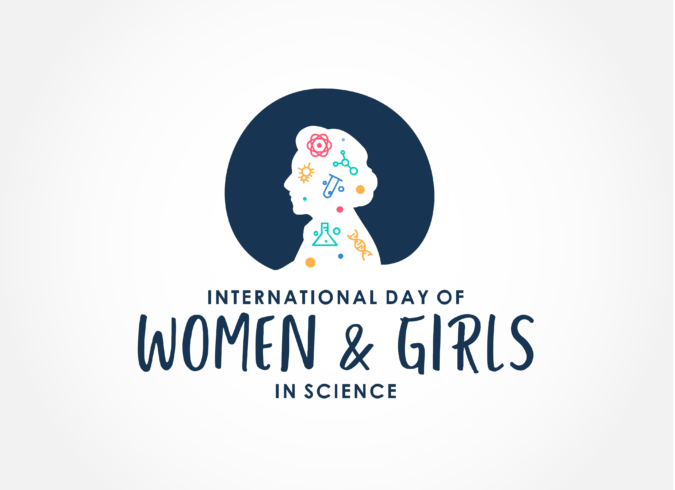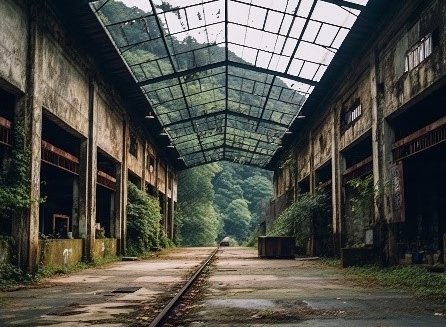Today marks the seventh annual International Day of Women and Girls in Science. Founded by the UN in 2015, the day honors the role women play in STEM fields while also putting a spotlight on the significant gap that still exists between the number of men earning degrees in these fields versus their female counterparts.
Since our founding in 1993, Sanborn Head has steadily improved the ratio of female scientists and engineers on our team. Today fully 40% of our company are women, with women serving key roles in all areas of our business. We continue to add talented women in all of our client service areas, and we remain committed to helping women enjoy rewarding careers as engineers and scientists by helping them obtain professional licensure, providing them with challenging technical assignments, and seeking opportunities to present at industry and professional events to help grow their professional reputations.
In honor of this day, we are spotlighting six of our employees as they discuss what their experience has been like as a woman in STEM:
- Kelly Dubois
- Kristen Esser
- Meghan Reisenauer
- Jena Shaw
- Chelsey Shepsko
- Leigh Williams
How were you encouraged to get into STEM?
KD: I was lucky that my primary education science and math teachers, as well as my parents, were very supportive of my interest and aptitude in STEM. They all helped build my self-confidence so that by the time I got to college and faced opposition to being a woman pursuing an engineering degree, I was able to push past the opposition and succeed.
KE: A combination of being decent at academics at a young age and enjoying learning about different aspects of the world, especially natural and social systems. I’ve always wanted to understand things and STEM (science in particular) offered a satisfactory explanation.
MR: My parents both have careers in STEM, and I was encouraged from a young age to try my best in all school subjects and find what spoke to me most. I’ve always loved the environment and learning about chemistry, biology, and other concepts, so I decided early on to pursue environmental engineering.
JS: I met a female engineering student during my first year in undergrad. At the time, I was a poly-sci major, but finding that less than interesting, she convinced me to give engineering a try. We only had electrical or environmental engineering at my undergrad, so I went to the head of the environmental engineering department, who was a woman, and she really encouraged my transition into the field. She became my mentor, as well as my professor for many courses throughout my undergrad degree and has been and continues to be a big support in navigating my way through the engineering world.
CS: I was always passionate about the environment and innovative technology. Teachers throughout my life have asked what my passions are and helped me navigate a career that combined the two.
LW: When I was a little girl I remember being fascinated by breaking machines or toys apart to see what made them work. In my late twenties, after strings of odd jobs, I decided to get an A.S. in management in hopes of finding secure and reliable work. Part of obtaining that degree required me to take STEM courses. A rather innocuous statement made by my academic advisor, in reference to my grades in those courses, “I might want to look into more science focused business courses, like economics”.
In doing a job prospectus I saw that many economics jobs were competitive and less public facing work. Though I stumbled on research that said engineering was at an intersection of business and the sciences and pursued my B.S. in Civil Engineering atop my A.S. in Management.
How can men be better allies for women in STEM?
KE: Treat everyone with the same respect, whether they be male identifying, female identifying, or any other non-binary gender identifying. We’re all people. Also make an environment that is based on welcoming new and challenging perspectives, a lot of times biases are unconscious and constantly reevaluating your own viewpoint from other perspectives sheds light upon them.
JS: Listen. Women are brilliant, and they have brilliant ideas. Not that men are not, but there is enough room at the table for women (and minorities) to sit. Having a broader perspective can only build a stronger team and stronger companies. People like to see other people that look like them at the top. It is really encouraging to see other women (and minorities) at the top holding really powerful positions. It encourages me to work harder.
CS: Incorporate women and men equally into project work, and provide women leadership opportunities in areas that are passionate to them.
MR: I believe men can support and encourage women in STEM in a variety of ways, but to highlight only one – I would urge men to closely consider the language they use when speaking to or about women in the workplace. For example, I am a 24-year-old woman, and I am often referred to as a “girl” at jobsites I visit for work. Although I and other women may be young, and the word could be used in a friendly way, I dislike being referred to as a child, and I know many women who also take issue with this phrasing. There are many other examples, however, and I encourage men to keep in mind the ways that they may change their language depending on the gender of the person they’re discussing or speaking to, and whether those changes are beneficial.
LW: Provide opportunity and check bias. Women are just as driven as men. Women are just as capable of doing the work. As an elder millennial, gone are the days where society drew a direct line from physical strength to ability to work and gone are the days where men are the sole breadwinners, focused on their careers. STEM is one of the few work sectors where we all work tirelessly to progress our given disciplines and increase our body of knowledge or advance our state of practice, holding women back from that mission limits our diversity of thought and that is a disservice to us all.
What, if any, changes have you noticed to the field during Covid?
KD: One positive thing I have seen as an outcome of the COVID-19 pandemic is that it is now much more acceptable for all of us to be more flexible in how we work. We are able to get all of the work done, remotely, and around family commitments, and the work doesn’t always have to get done within the traditional 8-5 window. This is, however, a double-edged sword, and we are all still learning how to balance the “always on” mentality with personal time.
MR: The threat of Covid has changed many things about working in the field, most notably the constant presence of masks. Although it can occasionally make relationships with new clients or colleagues more difficult to form, we must of course keep everyone safe on the job!
JS: I do not have children, so I cannot speak to this firsthand, but in my observations and conversations that I have had with women who do have children, there has been a small shift in people’s mind when they are realizing how much effort goes into not only being the primary caregiver but also a full-time worker in the relationship. I think perspectives are changing, slightly but there is a long way to go.
CS: The change from in-person to virtual networking and collaborating.
LW: I’ve noticed that unpaid labor on women has increased dramatically and this has put additional stress on women at work. In many households, women are seen as the caretaker of children, grandchildren, or aging parents. The expectations to manage their typical workload and then take on the everchanging needs of caretaking has stretched them thin. Personally, my partner and I have had to restructure work hours, work locations, and manage life on two fronts, entertaining a child before a work meeting or prepping their lunch while on a call.
Do you have any advice for women beginning their careers in the STEM fields? Possibly something you wished you had known when you first started?
KE: I’m still a bit in this phase but I think the best advice I have is to know your self-worth, believe in your self-worth, and learn how to set firm boundaries. Also, get a therapist but that’s just general life advice to anyone. And don’t make your career and work your entire identity.
MR: I would encourage all young women beginning their careers or studies in STEM to try to reduce their feeling that showing vulnerability may be a negative thing. In STEM, but in any career, it is very important to acknowledge that we do not know everything, and to always ask for help or clarification when needed. This does not show that you are less capable, but rather that you can recognize a gap in your awareness and will do your best to solve it, even if you may feel embarrassed or shy. Women in STEM often feel they need to be perfect to disprove a stereotype, but it’s always better to admit your shortcomings than hide them!
JS: Do it. Get involved in the STEM field and find other women that are involved and connect with them. There is nothing wrong with building a support system to help you navigate your career. Don’t be afraid to speak up, ask questions, and be curious. Change jobs if the environment is toxic and do not put up with inappropriate or disrespectful behavior just because you do not want to rock the boat.
CS: Find a mentor as soon as possible that will help you grow professionally and personally. Share your ideas, no matter the audience!
LW: As a prospective engineer in college, I had to overcome a lot of systemic bias that geotechnical engineering was “male dominated or masculine”. All disciplines regardless of their current gender makeup should be accessible to women. If you’re the only woman in your advanced physics classes you’re just as valid as your male counterparts. When you start your career and find you’re the only woman on the construction site, you earned the right to be there just as any of your peers. Imposter syndrome is hard to shake sometimes and with limited representation it can be hard to feel you have the ability to succeed. You will have to overcome adversity, but you’ll be strong enough to meet it, if you never lose site of your own ambitions.
What’s your favorite part of your job?
KD: My favorite part of my job is getting to know my coworkers, both at Sanborn Head and those that I work with outside Sanborn Head. It is truly wonderful to me to see increasing diversity in our field and in our company, and learning about the journey others have made to get here is fascinating to me.
KE: Most of the people I’ve met have been wonderful human beings, and when a field day actually goes decently and you’re in a good mood the view of various parts of Boston on the drive back home (especially in the winter) hits a certain way that makes you feel grateful and in awe at the same time.
MR: My favorite part of my job is that every day, I’m helping to make people safer and less exposed to dangerous chemicals that may have been in the environment around them without our work.
JS: The different type of work that I get to do and the variety of projects that I am involved in.
CS: That I get to advocate for the environment and push forward initiatives for sustainability.
LW: What isn’t? I get to solve problems all day with a focus on providing foundation support to buildings, dams, utilities, and municipal facilities. Providing the support needed to provide basic human needs like building shelters for families, bringing power and water utilities to homes and businesses, and maintaining critical transportation infrastructure for our country is the most rewarding service I can provide. Even if I find myself working on for-profit ventures, the finished product is always a public good/service.




